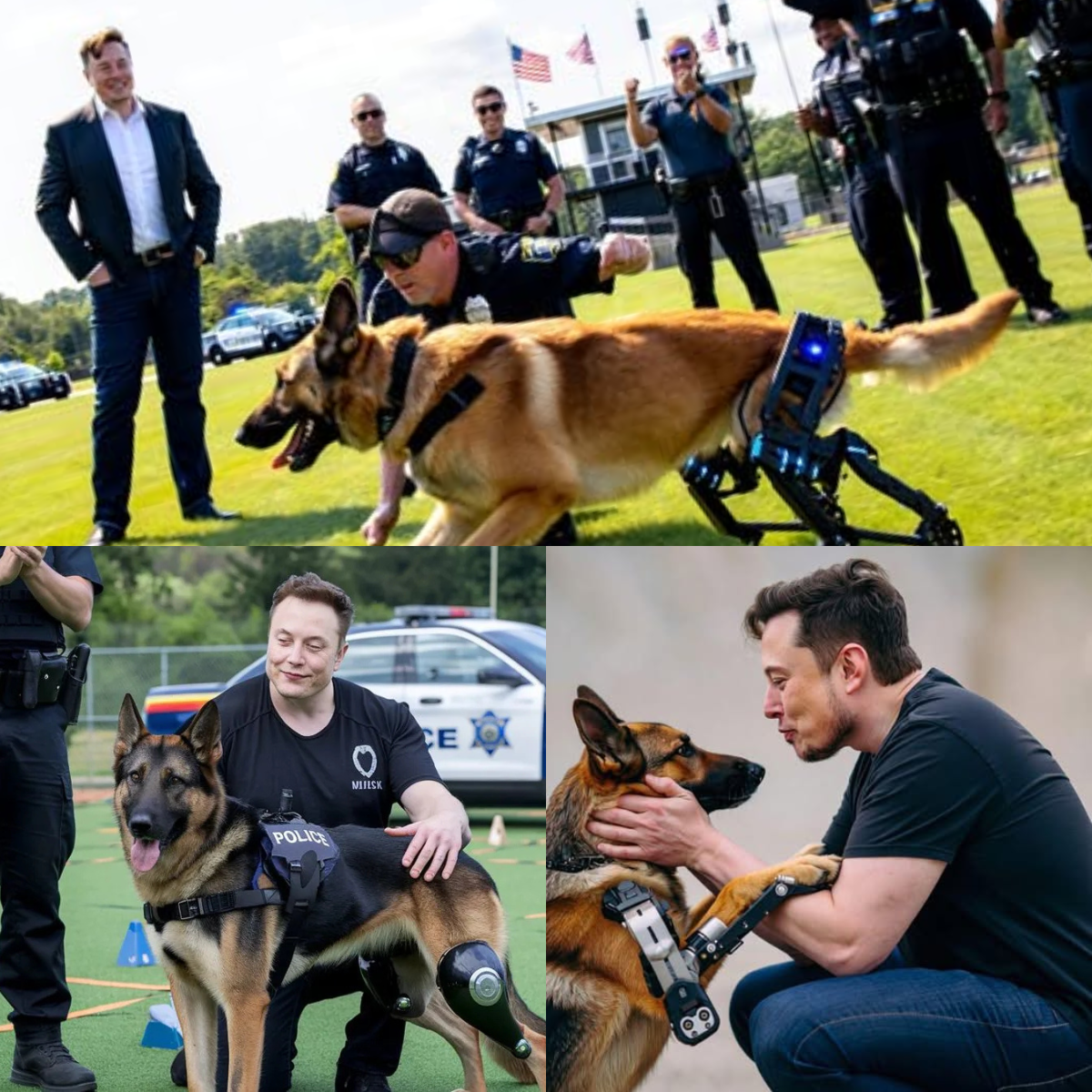
The moment, captured in a short video now spreading rapidly across social media, shows a retired K9 named Rex — who lost both back legs in the line of duty — taking his first tentative steps using Musk’s new NeuroStride™ robotic limb system. The crowd of handlers, veterinarians, and onlookers erupted into cheers as Rex transitioned from careful walking to an enthusiastic trot.

A Mission Beyond Business
Musk, known for ventures like Tesla and SpaceX, described the project as “a way to give back to those who give everything.”
“These dogs put their lives on the line without hesitation,” Musk said during the unveiling. “Technology should serve more than profit — it should restore hope and dignity.”
A Global Reaction
The footage of Rex’s recovery has already inspired an outpouring of gratitude from across the globe. Law enforcement agencies, animal rights groups, and everyday citizens have praised the program for recognizing K9 officers as true heroes.
“I never thought I’d see Max run again,” said Officer Daniel Ruiz, whose partner was among the first dogs fitted with the new prosthetics. “It’s like getting a part of my family back.”
On X (formerly Twitter), hashtags like #K9Heroes and #MuskMiracle began trending within hours. Many users shared their own stories of working with service animals and the deep bonds they formed.
From Innovation to Lifesaving
Each set of robotic legs is custom-fitted using 3D scanning, ensuring comfort and balance. Sensors embedded in the limbs respond to neural signals transmitted from the dog’s brain through a non-invasive headband. Within weeks of training, most dogs can walk, climb, and even chase tennis balls — something many handlers thought would be impossible again.
Animal rehabilitation experts believe this could revolutionize treatment for injured service animals worldwide, from military working dogs to disaster-response K9s.
More Than Just a Donation
Musk has pledged to cover the cost for the first 500 prosthetic systems, including lifetime maintenance. The program also includes training sessions for handlers and veterinary teams to ensure the dogs adapt safely.
“This isn’t just a piece of tech,” Musk said. “It’s a promise that their sacrifice will never be forgotten.”
Looking Ahead
While still in its early stages, the initiative has already sparked interest from animal hospitals and rescue organizations hoping to adapt the technology for civilian pets. Discussions are underway to expand the program to injured rescue dogs, therapy dogs, and even wildlife rehabilitation projects.
For now, though, the most powerful moment remains that first video: Rex, tail wagging, charging across a training yard, free once more.
As one handler put it through tears:
